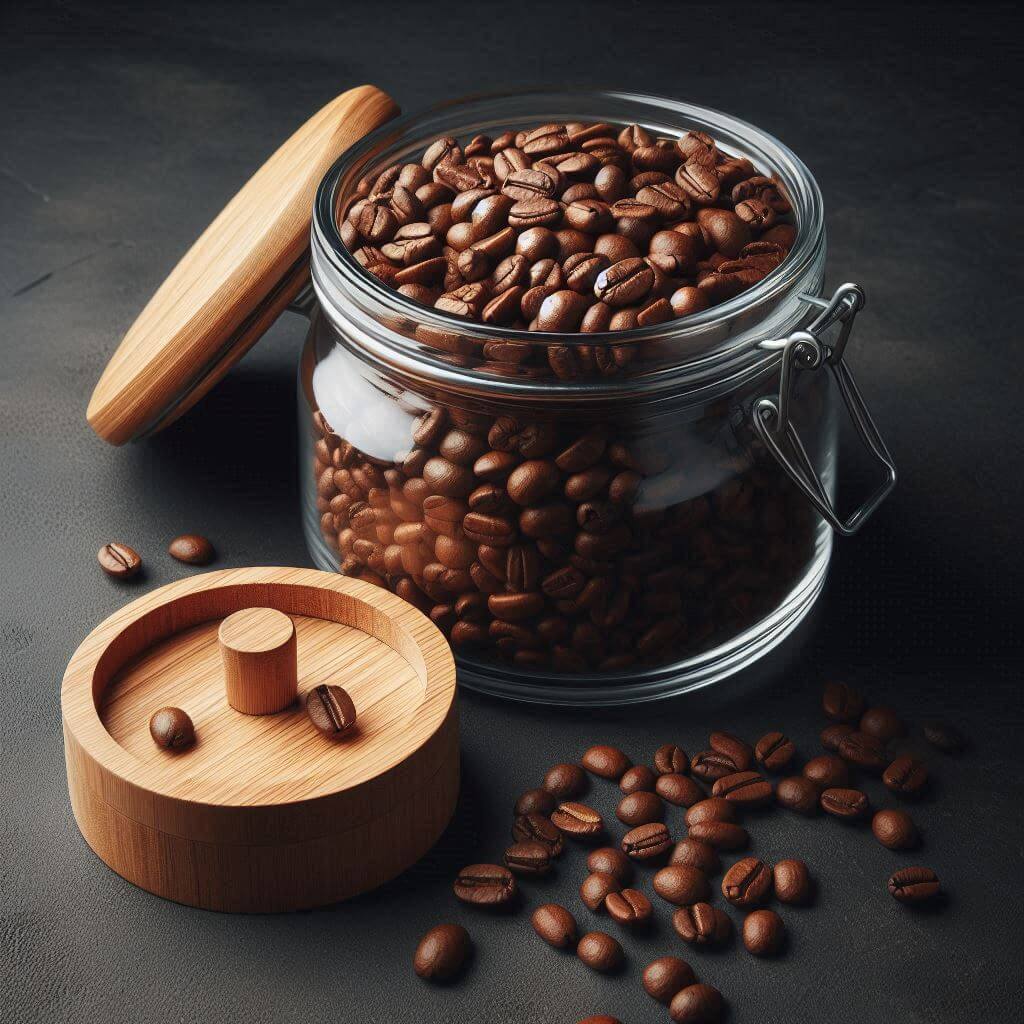
To keep coffee beans fresh, you must first understand why they go stale. Coffee beans are sensitive to a combination of four main factors: air, moisture, heat, and light. When beans are exposed to these elements, they quickly decompose and lose their taste and aroma.
Air is probably the biggest culprit. When coffee beans come into contact with oxygen, they begin to oxidize, which results in the loss of essential oils and aromatic compounds. This oxidation process can begin almost immediately after the beans are opened, with noticeable flavor changes occurring over several days if left outdoors. Similarly, moisture can seep into grains, destroying their cell structure and causing them to become stale and even moldy. The hygroscopicity of coffee beans means that they easily absorb moisture from the environment. This is particularly problematic in humid environments, where even brief exposure to air can lead to moisture absorption.
Heat accelerates the oxidation process and can also cause the delicate oils in the coffee beans to turn rancid. Ideally, coffee beans should be stored at a stable temperature, preferably between 60°F and 70°F (15°C and 21°C). Temperatures above this range can cause the oil in the beans to evaporate or deteriorate, resulting in a loss of flavor. Constant exposure to temperature fluctuations can also cause the beans to expand and contract, which in turn affects their structural integrity and quality.
Finally, light, especially sunlight, can break down the flavor compounds in the coffee beans, resulting in a loss of both aroma and flavor. Ultraviolet (UV) rays can cause the coffee’s organic compounds to deteriorate, resulting in an even and less intense flavor profile. This is why it is important to store coffee beans in opaque containers that can protect them from direct light.
What Is The Best Storage Container For Coffee Beans?
Now that you know what you’re dealing with, it’s important to choose the right container for storing your coffee beans. The ideal storage container should be airtight, opaque, and stored at room temperature. Air-tight containers are necessary to prevent air from entering and to maintain the oil and moisture levels in the beans. When we talk about airtightness, we mean containers with lids that close tightly, for example with silicone gaskets or locking mechanisms that prevent air from entering. This is especially important because any exposure to air can cause the grains to oxidize, leading to a loss of flavor and aroma.
Glass jars with airtight lids are a popular choice, but make sure they are kept out of direct light to protect the beans from harmful UV rays. Glass jars can effectively seal out air if they have a suitable sealing mechanism, such as a snap-on cap or a screw cap with a rubber gasket. However, since glass lets light through, it is very important to store these jars in a dark place, such as a pantry or closet, to protect them from light damage. Ceramic jars with resealable lids are also effective because they are opaque and airtight. Ceramic canisters have the advantage of naturally blocking light and are usually designed to maintain a seal, making them a reliable option for keeping your coffee fresh.
Vacuum containers are gaining popularity. These containers remove air from the storage chamber, ensuring that the beans are not exposed to oxygen, helping to preserve their flavor and aroma for longer. For example, some vacuum containers have a hand pump or an automatic vacuum mechanism to pump the air out of the container. Taking away oxygen, these containers significantly slow down the oxidation process. Metal canisters, as long as they are food-grade and leakproof, can also serve this purpose well. For example, stainless steel canisters with airtight lids provide an excellent barrier to air, moisture, and light.
Also, if you choose metal or ceramic containers, make sure they are lined with an inert material to prevent any potential chemical reactions between the container and the coffee beans. This is especially important for metal containers, as prolonged contact with certain metals can potentially alter the taste of your coffee.
What Temperature Is Good For Coffee
It is often debated whether to store coffee in the refrigerator or freezer. Short answer: avoid both. The refrigerator is an environment with a high moisture content, and since coffee acts as a deodorant, it absorbs various odors from other products. This can make a big difference in the flavor profile of your coffee. Moisture levels in refrigerators typically range from 5% to 20%, which can cause condensation to form inside the storage container, making the beans prone to mold and spoilage.
Similarly, while freezing may seem like a viable option for long-term storage, constant temperature fluctuations can cause condensation on the beans when they are taken out, introducing moisture and compromising their integrity. When coffee beans are moved in and out of the freezer, the temperature change can cause condensation to form, a process known as “sweating”. This moisture can be absorbed by the beans, accelerating the degradation process. In addition, freezing can also cause coffee oils to migrate to the surface, which can affect bean quality and grind consistency.
It is best to store coffee beans in a cool, stable environment at room temperature. Ideally, you should aim for a storage temperature between 60°F (15°C) and 70°F (21°C). A pantry or closet away from a stove, oven, or any other heat-producing appliance is ideal. A constant temperature is crucial because fluctuations can affect the structure and composition of the grains. For example, storing grains near a kitchen appliance that is frequently turned on and off can expose the grains to periodic bursts of heat, causing uneven aging and degradation.
It is also important to note that storing beans in a basement or garage, where the temperature can drop too low or rise depending on the season, is not recommended. Excessively cold temperatures can cause the beans to become brittle, while high temperatures can accelerate the breakdown of aromatic compounds and essential oils, resulting in a flat and stale flavor profile.
For those who live in extremely hot climates, using an insulated storage container can help maintain a more stable temperature. These containers are designed to protect against sudden temperature changes, ensuring that the beans remain within the optimal temperature range. If an insulated container isn’t an option, simply storing beans in the coolest part of the house can also make a noticeable difference.
Grinding And Use Of Coffee
Correct grinding technology is no less important for preserving the freshness of coffee beans. It is advisable to grind only the necessary amount immediately before brewing. Pre-ground coffee loses its freshness faster than whole beans because the increased surface area of the coffee particles promotes faster oxidation.
Investing in a good quality grinder can make a big difference. Burr grinders create a more even grind that ensures even extraction during the brewing process, creating a better-tasting cup of coffee. Blade grinders, on the other hand, tend to produce an uneven grind and can produce heat that can affect the taste of the coffee.
Also, when measuring coffee, use a clean, dry spoon to avoid moisture getting into the storage container. Close the container immediately after using up the required amount to minimize exposure to air.
Buy As Much As You Need
While it can be tempting to buy coffee beans in bulk to save money, this can often lead to excess beans that can go stale before you have a chance to use them. Instead, by buying smaller quantities of beans more often, you will always have fresh coffee on hand. Try to buy enough beans to last a week or two at a time. In this way, you can enjoy the fresh, bright taste of coffee without worrying about the beans losing their quality.
When buying coffee, pay attention to the roasting date, not the expiration date. Freshness is measured by the roast date, so try to buy coffee that has been roasted within the last week or two. Many specialty coffee shops provide this information on their packaging, which can help you make a more informed choice.

